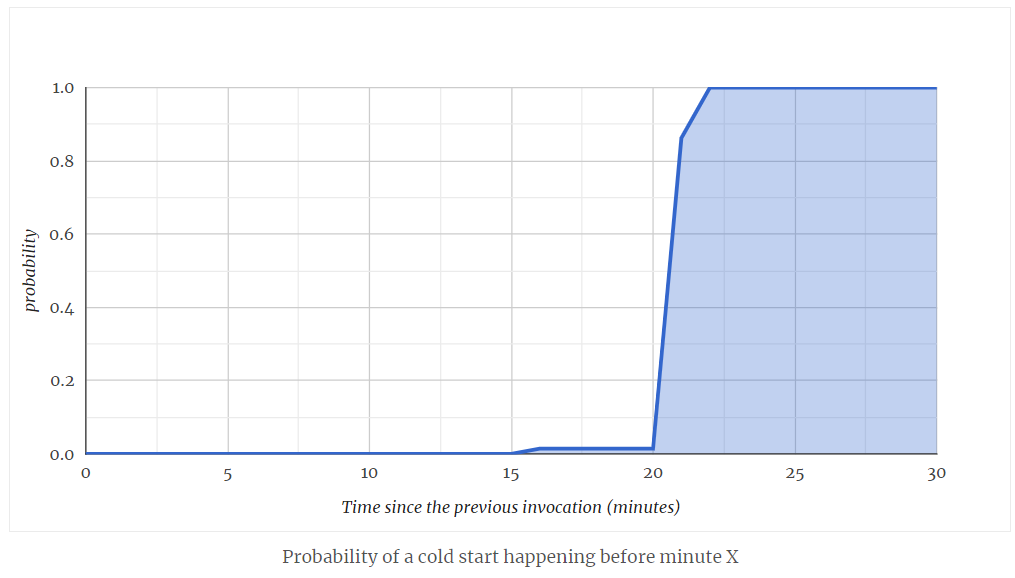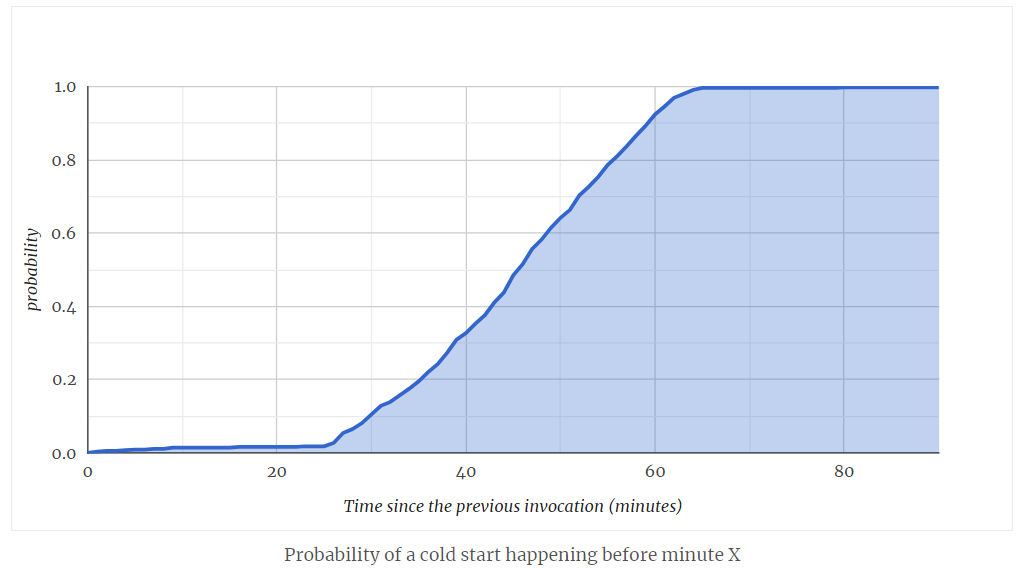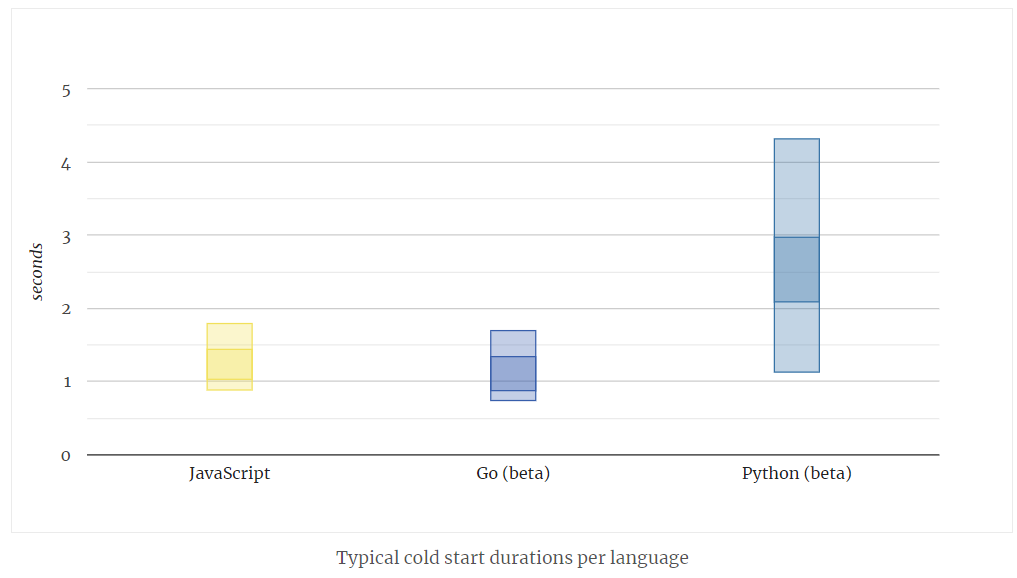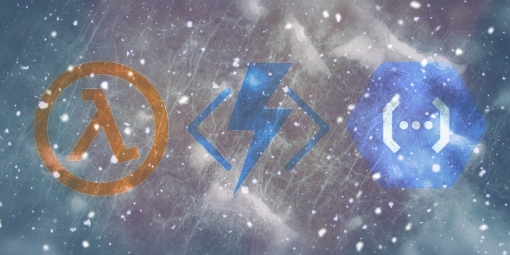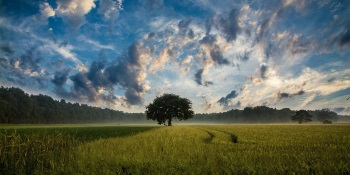Cold Starts
When Does Cold Start Happen on Google Cloud Functions?
The very first cold start happens when the very first request comes in after deployment.
After that request is processed, the instance stays alive for the time being to be reused for subsequent requests. But for how long?
Read more...When Does Cold Start Happen on Azure Functions?
The first cold start happens when the very first request comes in after deployment.
After that request is processed, the instance stays alive for the time being to be reused for subsequent requests. But for how long?
Read more...When Does Cold Start Happen on AWS Lambda?
The first cold start happens when the very first request comes in.
After that request is processed, the instance stays alive for the time being to be reused for subsequent requests. But for how long?
Read more...Google Cloud Functions: Cold Start Duration per Language
The following chart shows the typical range of cold starts in Google Cloud Functions, broken down per language. The darker ranges are the most common 67% of durations, and lighter ranges include 95%.
Read more...Google Cloud Functions: Cold Start Duration per Instance Size
Google Cloud Functions have a setting to define the memory size that gets allocated to a single instance of a function. The CPU resources are allocated proportionally to the memory. So, in theory, larger instances could start faster.
Read more...Comparison of Cold Starts in Serverless Functions across AWS, Azure, and GCP
AWS Lambda, Azure Functions, and Google Cloud Functions compared in terms of cold starts across all supported languages
Read more...Cold Starts in Google Cloud Functions
Running GA and Beta languages on different instance sizes
Read more...Cold Starts in Azure Functions
Influence of dependecies, language, runtime selection on Consumption Plan
Read more...Cold Starts in AWS Lambda
Selection of languages, instance sizes, dependencies, VPC, and more
Read more...Azure Functions: Cold Start Duration per Language
The following chart shows the typical range of cold starts in Azure Functions, broken down per language. The darker ranges are the most common 67% of durations, and lighter ranges include 95%.
Read more...AWS Lambda: Cold Start Duration per Language
The following chart shows the typical range of cold starts in AWS Lambda, broken down per language. The darker ranges are the most common 67% of durations, and lighter ranges include 95%.
Read more...AWS Lambda: Cold Start Duration per Instance Size
AWS Lambda has a setting to define the memory size that gets allocated to a single instance of a function. The CPU resources are allocated proportionally to the memory. So, in theory, larger instances could start faster.
Read more...Cold Start Duration of VPC-connected AWS Lambda
AWS Lambda might need to access resources inside Amazon Virtual Private Cloud (Amazon VPC). In the past, configuring VPC access slowed down the cold starts significantly.
Read more...AWS Lambda Cold Starts After 10 Minutes
How AWS Lambda changed the policy of recycling idle instances
Read more...Less Frequent Cold Starts in Google Cloud Functions
Google keeps idle instances of Cloud Functions alive for many hours.
Read more...Visualizing (Absence Of) Cold Starts in Binaris
Running visual map experiment on Binaris cloud functions.
Read more...Reducing Cold Start Duration in Azure Functions
The influence of the deployment method, application insights, and more on Azure Functions cold starts.
Read more...Evergreen Serverless Performance Reviews
Automating cloud infrastructure to delivery always-up-to-date performance metrics.
Read more...Measuring Cold Starts
We are testing cold starts on cloud functions responding to HTTP requests because that’s where the increased latency matters the most.
Each cloud function responds with a simple 200 OK with the following custom response headers:
Azure Functions V2 Is Released, How Performant Is It?
Comparison of performance benchmarks for Azure Functions V1 and V2
Read more...Serverless: Cold Start War
Comparison of cold start statistics for FaaS across AWS, Azure and GCP
Read more...AWS Lambda Warmer as Pulumi Component
Preventing cold stats of AWS Lambda during longer periods of inactivity, implemented as a reusable Pulumo component
Read more...Cold Starts Beyond First Request in Azure Functions
Can we avoid cold starts by keeping Functions warm, and will cold starts occur on scale out? Let's try!
Read more...Azure Functions: Cold Starts in Numbers
Auto-provisioning and auto-scalability are the killer features of Function-as-a-Service cloud offerings, and Azure Functions in particular.
One drawback of such dynamic provisioning is a phenomenon called “Cold Start”. Basically, applications that haven’t been used for a while take longer to startup and to handle the first request.
Read more...
